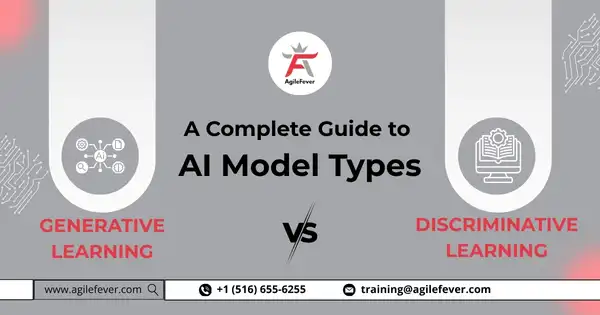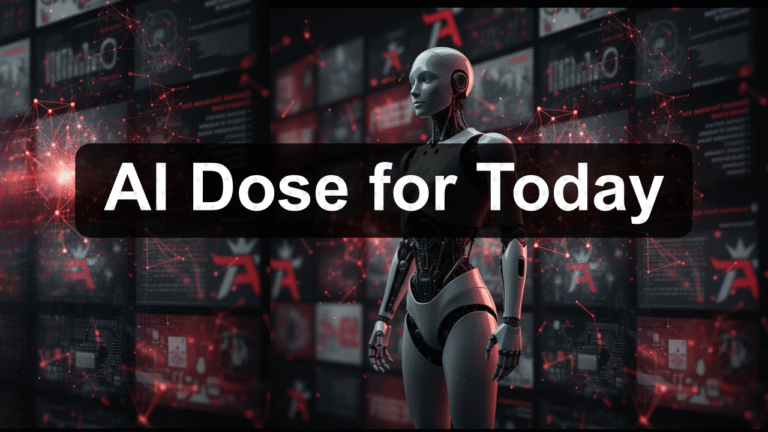Artificial Intelligence continues to evolve through two major learning approaches that define how machines understand and respond to information. Generative learning enables systems to create new data, while discriminative learning focuses on identifying patterns and making predictions. Together, they form the foundation of how AI applications, from chatbots to image recognition, work today. As industries move toward automation and creativity, knowing how these models differ has become essential for developers, researchers, and business leaders. This guide breaks down both methods, their key differences, and why the ability to generate, not just classify, data is shaping the next era of intelligent systems.
Introduction to Generative Learning
Generative learning is the process by which AI models learn patterns from data and use that understanding to produce new, realistic examples. Unlike traditional algorithms that rely solely on labeled information, these models internalize the structure of entire datasets, enabling them to generate, not just analyze, data.
The technology powers today’s most famous AI tools: ChatGPT, Midjourney, Stable Diffusion, and DALL·E. They don’t just memorize patterns; they understand relationships between words, shapes, and sounds deeply enough to synthesize new, coherent outputs.
At its core, this approach models the joint probability distribution between inputs and outputs. That means it doesn’t simply ask, “What is the label for this data?” but “What is the nature of this data and how can I recreate it?”
Practical Examples
- Text Generation: Chatbots, virtual assistants, and AI copywriters create fluent, context-aware content.
- Image Creation: AI visual tools convert ideas into art or product prototypes.
- Audio and Music: Generative systems compose music and mimic human voices.
- Synthetic Data: AI creates simulated datasets for healthcare, finance, and robotics research.
Why It Matters in 2025
Generative models are central to AI’s evolution because they unlock creativity. They are used to train digital avatars, simulate business scenarios, and accelerate R&D processes. As transformer-based architectures improve, the capability of these systems continues to expand, redefining the boundaries between human and machine intelligence.
Discriminative Learning – The Foundation of Prediction
Before AI could dream or create, it had to recognize. Discriminative learning forms the backbone of most applied machine learning systems today. It focuses on understanding boundaries between categories and making accurate predictions based on given data.
A discriminative model learns conditional probability, represented as P(y|x), the likelihood of a label (y) given input features (x). It learns how to tell things apart, not how to make new ones.
For example, a model trained to detect credit card fraud doesn’t generate transactions; it classifies each as legitimate or suspicious. A sentiment model doesn’t write reviews; it analyzes and labels them as positive or negative.
Core Techniques
- Logistic Regression
- Support Vector Machines (SVM)
- Decision Trees and Random Forests
- Neural Networks for classification tasks
Each method prioritizes accuracy, interpretability, and speed, which makes them ideal for operational AI systems that run at scale.
Comparing the Two
| Feature | Generative Learning | Discriminative Learning |
| Goal | Learn and reproduce data patterns | Learn decision boundaries |
| Probability | Models P(x, y) | Models P(y |
| Output | Creates new examples | Classifies existing data |
| Data Needs | Large and diverse datasets | Smaller, labeled datasets |
| Learning Type | Often unsupervised/self-supervised | Typically supervised |
| Creativity | High | Low |
| Best Use | Content generation, design, simulation | Prediction, analytics, recognition |
Discriminative learning continues to dominate business applications that require measurable accuracy, such as risk scoring, medical diagnosis, and spam filtering. It’s reliable, tested, and explainable.
Why Generative Models Are Redefining AI
As industries evolve, automation is not enough; innovation requires creativity. That’s why generative learning has become the driving force behind modern AI research and deployment.
Transformers, diffusion models, and large-scale neural networks have made it possible for machines to go beyond classification. They can now design marketing campaigns, produce architectural mockups, write research summaries, or assist in drug discovery.
Generative systems don’t just learn from data; they extend it. This expansion creates massive value in sectors where simulation and design accelerate decision-making.
Examples of Industry Transformation
- Healthcare: Generating synthetic patient records to test diagnostic algorithms safely.
- Finance: Simulating economic scenarios to predict market fluctuations.
- Retail: Generating product visuals or marketing content for e-commerce.
- Education: Personalized tutoring and automatic content creation.
- Media: Scriptwriting, voice dubbing, and animation automation.
Each application reflects the shift from deterministic prediction to adaptive creation, where models are not just tools but collaborators in solving problems.
How Both Systems Work Together?
While their goals differ, the real strength of modern AI lies in the collaboration between the two. Generative systems produce data; discriminative systems interpret or validate it.
In image classification, for example, a generative model may create synthetic data to improve training coverage, and a discriminative model classifies those outputs to enhance recognition accuracy. This synergy makes AI pipelines more robust, fair, and efficient.
Real-World Integration
- Autonomous Vehicles – Generative modules simulate driving conditions; discriminative modules detect obstacles and make navigation decisions.
- Speech Recognition – One generates missing audio frames; the other classifies phonemes and words.
- Cybersecurity – Generative systems simulate attack patterns; discriminative systems detect anomalies.
- Finance – Generative models test new economic conditions; discriminative ones assess investment outcomes.
The combination helps organizations balance creativity with control, fostering systems that are both innovative and dependable.
The Fastest Way to Learn Generative AI
Professionals looking to master next-generation AI need structured pathways that blend theory with real-world application. Understanding model design, optimization, and deployment requires hands-on experience with modern frameworks and architectures.
A strong learning roadmap includes:
- Mathematical Foundations: Probability, linear algebra, and information theory.
- Deep Learning Fundamentals: Neural networks, optimization, and backpropagation.
- Architectural Study: Variational Autoencoders (VAEs), Generative Adversarial Networks (GANs), and diffusion models.
- Implementation Skills: Using TensorFlow, PyTorch, and Hugging Face Transformers.
- Ethical Understanding: Managing data bias, privacy, and model transparency.
Traditional artificial intelligence courses for beginners build a basic understanding, but advancing into generative systems requires project-based learning. Working on text-to-image models, chat interfaces, or simulation tasks allows learners to explore creativity and logic simultaneously.
The Future of AI Model Development
AI is evolving from being reactive to proactive, from recognizing data to reimagining it. The next generation of systems will rely heavily on generative learning for adaptability and innovation.
Key Trends Ahead
- Multi-Modal Integration
AI models are now learning across text, image, and sound simultaneously, forming unified representations that deliver contextually aware responses.
- Synthetic Data Pipelines
Industries are increasingly using AI-generated data to train other models, improving diversity and reducing privacy risks.
- Self-Improving Agents
Emerging systems will continually refine their behavior through interaction and reinforcement, bridging learning and reasoning.
- Edge AI Generation
Lightweight generative networks are being optimized for real-time use on mobile and embedded devices.
- Ethical Intelligence
Future AI frameworks will emphasize transparency, fairness, and explainability, ensuring generative systems remain trustworthy and accountable.
Together, these innovations signal a shift from static AI applications to dynamic, evolving systems capable of adapting to changing human and environmental contexts.
Conclusion
The divide between discriminative and generative learning represents more than two technical strategies; it reflects the past and future of Artificial Intelligence itself. Discriminative systems teach machines to see clearly; generative systems teach them to create intelligently. While one enables precision, the other unlocks imagination. Mastering both is the key to building AI that is not only efficient but also transformative. If you want to understand this balance, build practical skills, and explore how generative systems are reshaping industries, this is the right moment to begin.
Join our free masterclass and explore more at AgileFever Masterclasses, gain practical insights, experience live demonstrations, and learn how real-world AI models evolve from classification to creation.
Frequently Asked Questions
What is generative learning in simple terms?
It’s a process where AI models learn from data to create new, realistic examples, such as text, visuals, or audio that mimic the original dataset.
What is discriminative learning used for?
It’s primarily used for tasks that require classification or prediction, like fraud detection, medical diagnosis, and object recognition.
How do both types of models complement each other?
Generative models produce data or simulations, while discriminative models analyze or classify them, resulting in more balanced and accurate AI systems.
Are generative models replacing discriminative ones?
No. They serve different purposes. Discriminative models remain vital for analytical and predictive use cases, while generative systems dominate creative applications.
What are common examples of each type?
Generative: GANs, VAEs, Diffusion Models, GPT.
Discriminative: SVMs, Logistic Regression, CNNs, Random Forests.
Is generative learning harder to train?
Yes. It requires more computational power, data diversity, and fine-tuning because models learn deeper relationships within data.
What skills are needed to work with generative models?
Proficiency in Python, deep learning frameworks, mathematics, and data preprocessing is essential for effective implementation.
How is generative learning applied in real-world systems?
It’s used in text generation, virtual design, digital avatars, synthetic data creation, and personalized user interfaces.
Why is ethical consideration important in generative models?
Because these models can create highly realistic outputs, maintaining fairness, authenticity, and accountability is critical to responsible AI development.
What’s the most efficient way to begin learning about these concepts?
Start with foundational machine learning concepts, then move into practical experiments with pre-trained generative frameworks and cloud-based AI environments.



